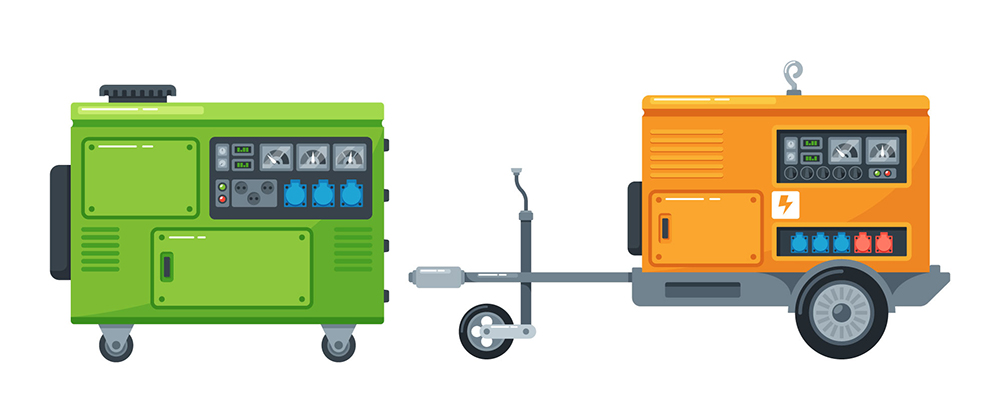As we saw in part 1 of this series, it is tough to make alternative electric sources economical when you are trying to operate a completely independent system. Usually the only time people install such systems is when the normal electric service is not available.
Utilizing alternative energy sources as a supplement to your normal electric service is a very different world. Renewable energy sources that operate in parallel with the utility can be very economical. In these systems, the goal of the alternative energy source is to reduce expenses.
Parallel Systems
All parallel system designs must be approved by the electric utility before installation. Some utilities require the customer to install sophisticated and expensive protection systems for parallel operation. I understand that some utilities do not allow parallel operation.
In most parallel systems involving alternative energy sources like solar and wind, the interface between the utility source and the customer’s source is usually an inverter designed for parallel operation. Solar voltaic cells and most small windmills produce low voltage dc power.
The inverter converts the low voltage dc to the utility 60 Hz. ac service voltage. For residential customers, some utilities allow the kWh meter on the side of the customer’s house to run backwards when the customer is selling excess power to the utility as long as the customer usage each month is more than they sell. The utility wants to send out a bill not a check. This is the best situation for the customer because every kWh he generates is worth what the customer pays for energy.
Some utilities install separate meters, one to measure how much energy the customer purchased and one to measure how much energy the customer sold. In this case, the meters are modified so they will not operate backwards and the utility usually purchases energy from the customer at a rate well below that which the customer is paying to buy energy. The utility usually purchases energy from the customer at the same rate they pay large generating companies for energy.
Safety
To protect the utility linemen from shock and other customers’ equipment from damage, most utilities require customers with their own generation automatically to disconnect from the utility source any time the utility source is lost. This is where the sophisticated relaying comes in.
Government Incentives
In some states, alternative energy systems can be economical because of the tax credits or state grants available to people and companies who install such systems.
I understand that California offers the greatest benefits. Massachusetts and Delaware are examples of states where grants are available up to fifty percent of the cost of the installation. Contact your state energy office to see what incentives are available in your state. Hundreds of homeowners and companies all over the U.S. are taking advantage of the grants and tax incentives.
According to an IEEE Spectrum magazine October 2007 article, “The Greening of Google,” the largest corporate installation of solar panels in North America is a Google office complex in California. The Google solar voltaic array will produce 1.6 million watts of electricity by the end of this year. More than nine thousand (9,509) parallel solar systems (101 million watts) were installed in the U.S. in 2006. Seventy percent of these systems where installed in California. Experts estimate that a solar installation costs between $3 and $5 per watt in California and between $6 and $10 per watt in the rest of the country.
Electrical contractors all over the country are now offering installation of solar systems for homes and businesses. One contractor in my area works with the utility, installs a completely automatic system and even fills out the paperwork for the owner to get the grant from the state. All the customer has to do is sign the contract and write out a check. In some states, there are companies who will install and maintain solar panels on your roof for free. All you do is sign a 15-year contract to purchase the energy from the solar panels at a fixed rate, which is less than what you are presently paying for energy from your local utility.
The Future
We need to encourage our state governments to create tax credits and/or state grants like California, New Jersey, Massachusetts and Delaware to promote alternative energy generation and conservation. In Germany, homeowners are paying 35 cents per kWh for electric energy. For the next twenty years, the German government promises to pay fifty cents per kWh for energy produced by homeowners and companies who install solar and wind generators. There are farmers in Germany who have covered their fields with solar panels. They are now solar farmers. Most of them make more money as a solar farmer than they ever did as a crop or cattle farmer. Most houses in Germany have solar panels on their roofs and more importantly, the whole country is reducing air pollution and rapidly becoming less dependant on coal, oil, gas and nuclear. For more information, see the NOVA special Solar Energy, Saved by the Sun.














Find Us on Socials